Threats to durability
The example shown on the previous page raises the question of just how damaging even small amounts of acid can be to pearls. We will explore this question using the example of several acidic products involved in the preparation and consumption of food.
The effect of one such substance is illustrated with the bracelet shown in Figure 1. Originally white, this piece was found to have suffered a rather obvious change to a grey colour. Made up of about 20 rows of small-sized (2- to 3-mm [0.07- to 0.1-in.]) Chinese freshwater cultured pearls in a typical rice grain shape, the bracelet was bought in China, together with a multi-rowed necklace (Figure 2).
The owner observed the colour change some time after a visit to an Italian restaurant, when she happened to look at her bracelet again. She then recalled during the meal, splashes of red wine from a glass on the table that had been accidentally pushed by the waiter had dropped onto her left hand, and she had quickly cleaned them off with a paper napkin. She later concluded she might have inadvertently wiped the napkin over the pearls.
In order to find out if the colour change could have been provoked by the spill, the restaurant owner made available a bottle of the Toscana wine (Sangiovese, Montalcino, 2014) that had been served on that particular evening. The test—performed with a loose Chinese freshwater cultured pearl—revealed a noticeable colour change to grey after just 30 minutes (Figure 3). The test was repeated with a different type of red wine (Shiraz, Cabernet, Australia), which led to the same result. The colour change was probably caused by an attack of the wine’s tartaric acid, possibly in combination with its colouring pigments entering the pearl’s organic matrix.
To find out more, the experiment was continued. After 16 hours, the pearl’s surface had become dull and discoloured, showing purplish crystal precipitations of tartaric acid (Figure 4). They became denser in the days to follow.


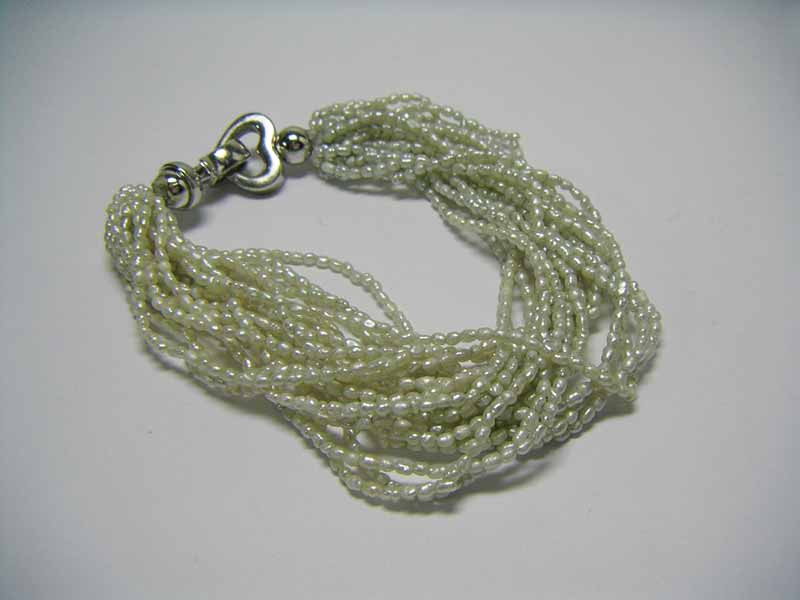
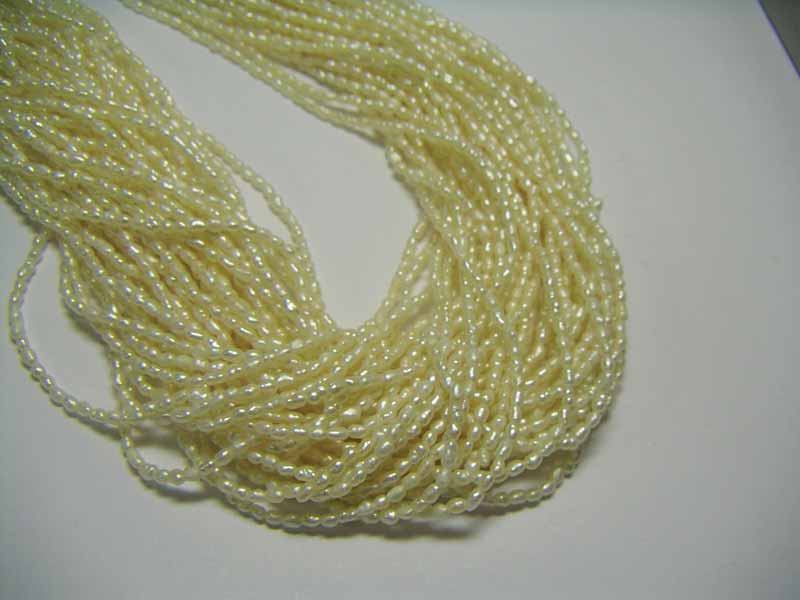
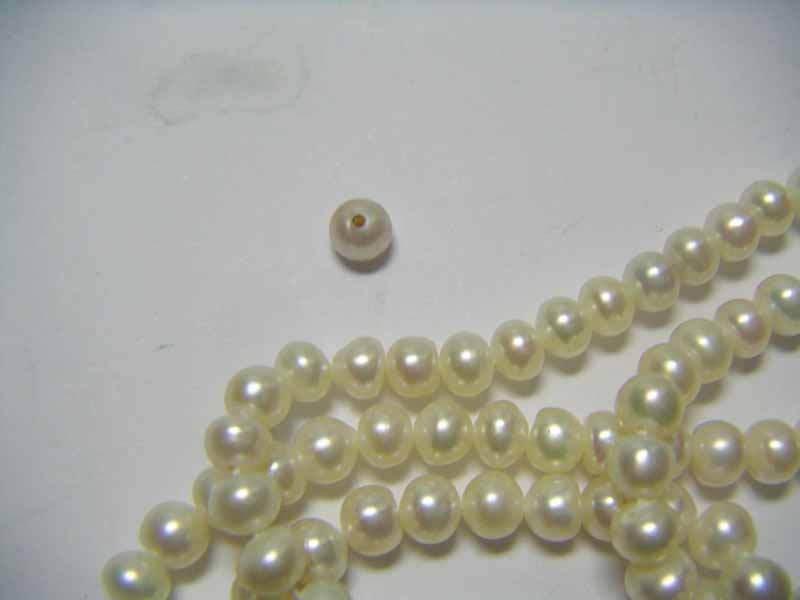
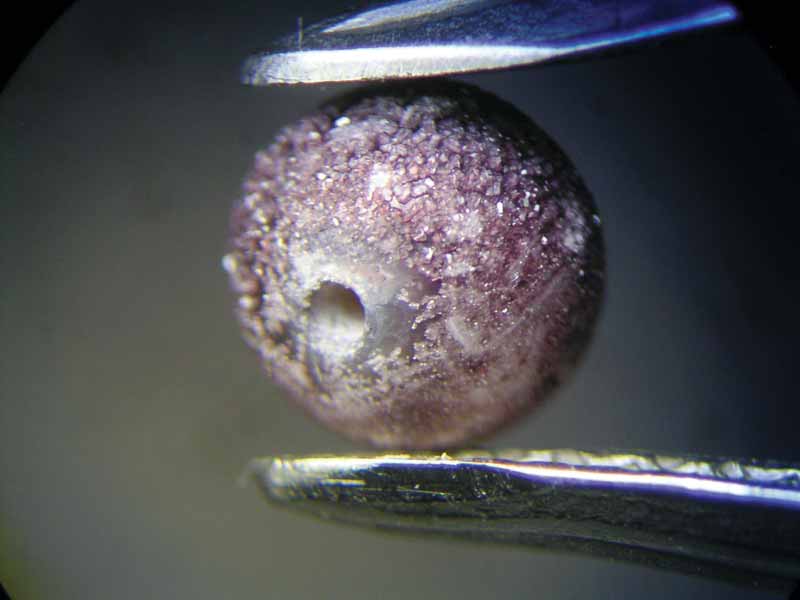
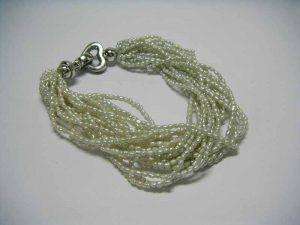
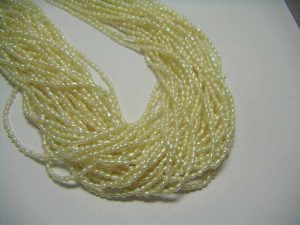
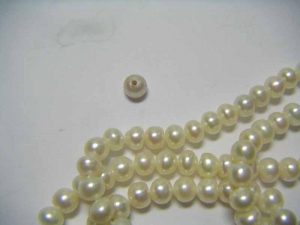
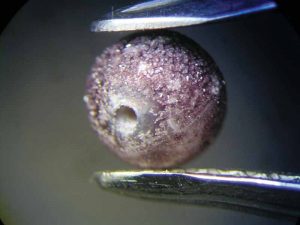




Is there any way to restore the pearl shine after it has been damaged?